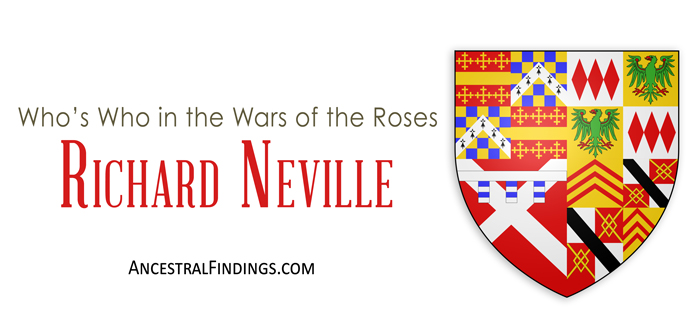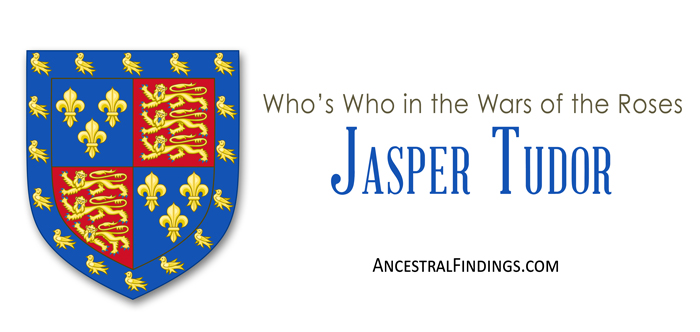Ah, the Princes in the Tower. Most people have heard of them and know there is a mystery surrounding their disappearance at the Tower of London, where they were supposedly being kept for their own safety. Yet, how many people know the story of the Princes is intimately tied to the Wars of the Roses? How many know when, exactly, they disappeared? How many know who their parents were? These two boys were just as crucial to the events of the Wars of the Roses as any of the other major players, even though they may not be discussed much except in terms regarding their disappearance. This is the real story behind these two young royals, and how the Wars of the Roses affected their entire known childhoods, as well as some possible explanations for what may have really happened to them.
They are known as the Princes in the Tower now, but they had other names. They were brothers, three years apart in age, and the sons of King Edward IV of England and his queen, Elizabeth Woodville. They were younger brothers to Elizabeth of York, who became the first Tudor queen through her marriage to Henry Tudor, and thus, uncles to the infamous Henry VIII. The older boy, Edward, Prince of Wales, was born in 1470 and was the fourth child and first son the king and queen had together (the queen having two older sons by her first marriage to Sir John Grey). The younger boy, Richard, Duke of York, was born in 1473 and was the king and queen’s 6th child together. Their 8th of the 10 children they had together was also a boy, named George, but he died of plague at two years old in 1479.
Edward and Richard were the king and queen’s heirs. Edward, as the elder one, was designated Prince of Wales and was set up with his own household when he was only three years old. It was traditional at that time for the primary heir of the English monarch to go live at Ludlow Castle on the Welsh border when he was young enough to be away from his mother, to keep a royal presence in Wales, and get the young prince used to govern an area of his own. Edward was sent to Ludlow with the queen’s brother, Sir Anthony Woodville, and her younger son by her first marriage (and, thus, Edward’s half-brother), Sir Richard Grey, as his royally appointed caretakers. From the time Edward was three until he was twelve, Sir Anthony and Sir Richard oversaw every aspect of his education and upbringing, with occasional visits from or to his parents.
The younger boy, Richard, Duke of York, stayed with his parents and took a slightly different path. As the “spare heir,” his main job was to make a successful marriage to a rich heiress who would bring a fortune to the kingdom’s coffers and become an accomplished noble who would bring honor and leadership to the court. To this end, he was made Duke of York when he was one year old, and this began a tradition among the royal family that continues to this day of making the second son of the king and queen the Duke of York.
Richard was also married at the age of four to the fatherless five-year-old heiress, Anne Mowbray, the last legitimate heir in the ancient and extremely wealthy Mowbray line. Naturally, two such young children were not expected to consummate their marriage, though they were given a wedding ceremony as lavish as any king or queens. Anne died three years later at the age of eight, and her estates and fortunes became Richard’s.
Everything was fine for the two princes until April of 1483, when they were ten and thirteen (or close to it), respectively. This is when their father, King Edward IV, died unexpectedly at the age of forty, after an illness brought on following a fishing trip in the rain with his friends. The elder prince was technically now King Edward V, and was called back to London from his home at Ludlow Castle, so he could be formally crowned in a traditional coronation ceremony.
Meanwhile, his mother, Elizabeth Woodville, knew she and her family had enemies among her late husband’s family, and she was concerned for the safety of her and her children. She took all of her surviving children with the king (with the exception of young Edward, who was coming from Ludlow), as well as her eldest son by her first husband, Lord Thomas Grey, and went into sanctuary at Westminster Abbey. Medieval laws said anyone seeking sanctuary in a consecrated building of worship like the abbey could not be meddled with there, even by the king, regardless of what they did (though her late husband and his brothers violated this sacred law once during his reign).
Elizabeth was right to be concerned. Her late husband named his only remaining brother, Richard, Duke of Gloucester, regent of the kingdom, meaning he would have control over his young nephew’s reign and government once the boy reached London. He already thought his royal nephew had been raised with too much Woodville influence, and he exerted his first powers as regent by stopping his nephew and his guardians on their way to London. Richard had Anthony Woodville and Richard Grey arrested, despite young Edward V’s demands otherwise, and later had them executed on trumped up charges of treason. By executing the dowager queen’s brother and son, Richard made a serious enemy of Elizabeth Woodville.
Richard took Edward V the rest of the way back to London and installed him in the Tower, which was not suspicious at the time. It was traditional for new monarchs to lodge there before their coronations, and that is the reason Richard gave for putting his nephew there. He wanted both of his brother’s sons in his control, though, and came to Elizabeth Woodville in sanctuary, again and again, asking her to hand over Richard, Duke of York, ostensibly to go keep his older brother company in the Tower. He sent his emissaries there several times, as well. Elizabeth steadfastly refused to hand over her youngest surviving son, until thinly veiled threats were made to her about sanctuary being broken and she and all of her children being dragged out into the streets. Only then did she let her boy go with his uncle to the Tower.
This was in April of 1483. Until June of 1483, Richard, Duke of Gloucester kept insisting he was planning a coronation for his nephew but kept having to put it off for various reasons. During this time, both boys were seen by the public playing together on the grounds of the Tower. Eventually, the boys stopped appearing outside and were only seen standing in the windows of the Tower. After June of 1483, they stopped being seen by the public at all.
By June of 1483, Richard, Duke of Gloucester, received information that made him believe his late brother’s marriage to Elizabeth Woodville was invalid, which made Edward V ineligible for the throne, as he was a bastard if the marriage of his parents wasn’t legal. Richard did not crown his nephew. Instead, he took the crown for himself and was crowned King Richard III in his own coronation ceremony.
Even during Richard III and Elizabeth Woodville‘s lifetimes, there were questions of what really happened to Edward V and Richard, Duke of York. Those who knew weren’t saying and never did. However, the princes were never officially seen again. Shortly before his coronation, Richard III dismissed all of the boys’ servants. Edward V’s personal physician was the last to leave and gave the last known account of seeing the boys. He said Edward V seemed quite emotionally distressed, and prayed constantly, as he expressed concern every day until the physician was dismissed that there might be plots against him.
The most common story of what happened to the boys is that they were killed by or on the orders of their uncle, Richard III. This was the official Tudor-era explanation when they were trying to establish legitimacy for their own reign. However, it is a perplexing explanation, because Richard was intensely loyal to his brother the king, and openly loved his nieces and nephews. He promised to protect Edward’s children, and for a man as proud of his reputation for honor as Richard, it seems unlikely he would do anything to sully it. Elizabeth Woodville even eventually came out of sanctuary and let her daughters serve at Richard’s court (after extracting a public promise from him to never harm them). It seems unlikely she would have trusted him around her daughters if she thought he killed her sons (even though he’s already had one of her sons by her first marriage killed).
Richard also had two other royal children in his care… the son and daughter of his executed elder brother, George Plantagenet. These children had a better claim to the throne than Richard III and were unquestionably legitimate, yet he neither crowned them nor killed them. In fact, he and his wife, Anne Neville, took very good care of them, raising them in their own home with their own son. It just doesn’t seem likely Richard killed his other royal nephews, though there is no proof he didn’t, either. Interestingly, Richard never tried to defend his honor by answering questions about the princes during his reign, when many of England’s citizens thought he had them killed, and it is strange that he did not defend this besmirching of his honor.
Another explanation is that Henry Tudor killed them once he killed Richard III in battle and had access to the Tower. Once he re-legitimized Edward IV and Elizabeth Woodville’s children so he could marry their daughter, it actually made the princes the rightful heirs again, and threats to his reign. No princes meant no problems for Henry. Others believe Henry’s mother, Margaret Beaufort, ordered the killings of the princes before Henry invaded England, to pave the way for his easy accession to the crown. She knew men who had access to the rooms in which the princes were kept, and those men were loyal to her. This is the explanation the Starz miniseries, “The White Queen,” intimated at. However, Margaret was known for being extremely pious, so ordering the killings of two boys seems somewhat out of character for her.

Then, there are those who believe the younger prince, Richard, Duke of York, escaped the Tower and grew to adulthood, which is a common belief when there are missing royal children. It is interesting that it is always Richard who is thought to have escaped, never Edward. Edward was exhibiting signs of illness when he went into the Tower, which many historians believe could have been an abscessed tooth… something that would have killed him in medieval times before there were treatments for such things. With Edward V already dead of an illness in the Tower, the stories go two ways for Richard. One is that he was set free by sympathetic guards and went to live quietly with his mother in the country, and then left for the European continent after her death, never making a claim on his royal heritage.
The other story is that Elizabeth Woodville obtained a lookalike boy to go to the Tower in place of Richard, and sent Richard to his father’s sister Margaret in Burgundy. The lookalike was killed along with Edward V by whoever killed them, and Richard grew up to come back to England to reclaim his throne as a young man in his early to mid-’20s. He came back under the name he’d been known by in Burgundy… Perkin Warbeck. Perkin looked enough like a son of Edward IV and Elizabeth Woodville, and acted enough like someone raised as royalty, that many royals in other countries accepted him as Richard, including his aunt Margaret in Burgundy. The king of Scotland even allowed him to marry one of his daughters. And, despite the fact that her daughter, Elizabeth of York, was already queen with three heirs by the time Perkin came around, Elizabeth Woodville supported him above her daughter in his claim to the English throne.
Elizabeth of York was never permitted to look at Perkin, so she couldn’t identify him as her brother. He raised an army to take on Henry Tudor (Henry VII), but was defeated, and put in the Tower for years. After Elizabeth Woodville died, Perkin was executed on Henry’s orders for supposedly trying to escape.
The Princes in the Tower remains an enduring and compelling historical mystery. People have been questioning what happened to them since the summer of 1483. DNA could resolve some of the mystery, letting us know if one or both boys were killed or otherwise died in the Tower, as two skeletons of children were dug up inside the Tower near the rooms where the boys were kept during renovations in the 1670s. These skeletons were assumed to be the Princes and were put in an urn in Westminster Abbey with an inscription saying it is them. But, it might not be. Thousands of people, including children, died on the grounds of the Tower since Roman times, and the one time scientists were allowed to examine the skeletons, in the 1930s, there was no radiocarbon dating or DNA analysis.
Because Westminster Abbey is under the jurisdiction of the English monarch, it would take royal permission to examine those bones again, and the current Queen Elizabeth II has not allowed it, stating she doesn’t want to set a precedent of opening royal tombs to answer historical questions. With DNA from Richard III now available since his missing skeleton was re-discovered in 2012, the bones could be identified as being related to Richard on the male (his brother’s) side or shown to not be related to him at all. Until a new monarch gives permission, or Elizabeth II changes her mind, the mystery of the Princes in the Tower will remain a mystery.






